한식 읽기 좋은 날
Authentic Korean Flavors Captivate the World!
HANSIK Report from Overseas
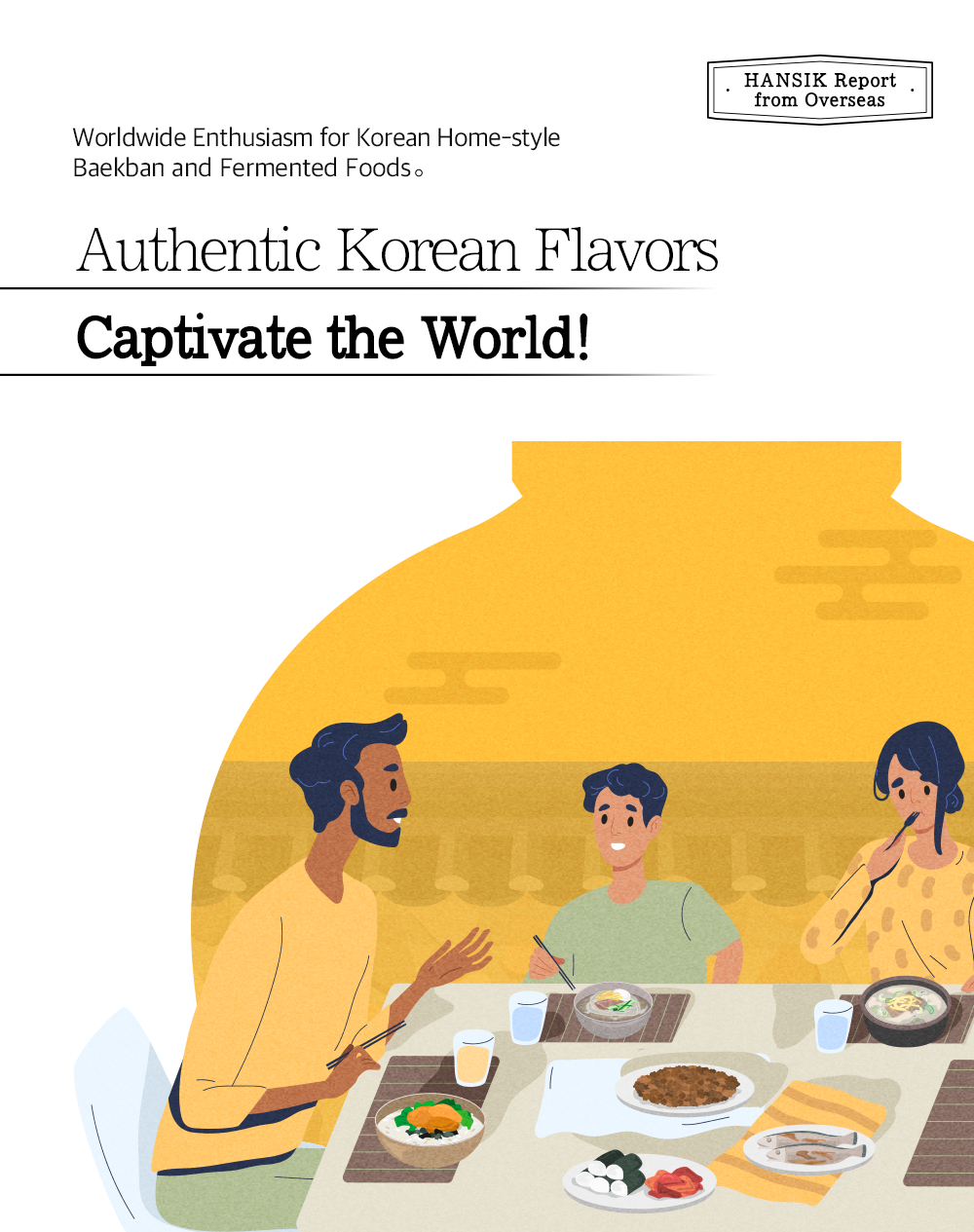
‘The most Korean’ is ‘the most global’. A Korean-style ‘Kisa-sikdang (taxi driver's restaurant)’ in the heart of New York City has become a must-visit spot among locals, and traditional Korean fermented foods with a long history are making their mark on global dining trends. Authentic Hansik is making its presence felt on the world stage. Simultaneously, innovative dishes like doenjang (soybean paste) salad and soju cocktails are capturing the palates of people worldwide. As the days grow longer, let's fully immerse ourselves in the intensified heat of K-Food's rising popularity.
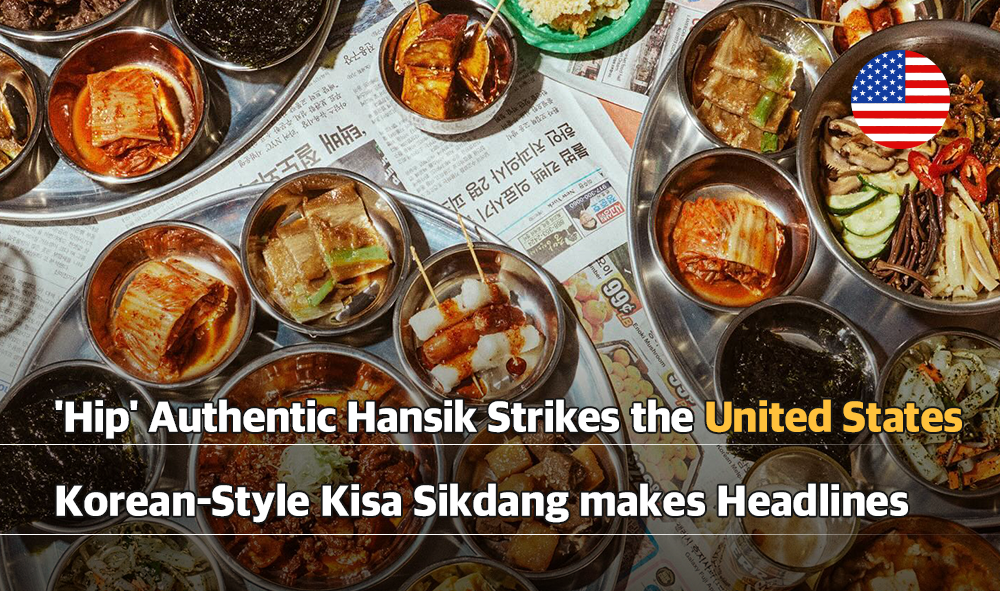
'Hip' Authentic Hansik Strikes the United States, Korean-Style Kisa Sikdang makes Headlines
A Korean ‘kisa-sikdang (taxi driver's restaurant)’, commonly seen on the streets of Korea, has made a splash in New York. This past April, a Korean restaurant inspired by the concept of a kisa-sikdang opened in the heart of the Lower East Side. The menu features Korean home-style meals, known as ‘baekban’, which consist of rice, soup, and side dishes. The signature dishes include boribibimbap (barley rice bibimbap), jeyukbokkeum (stir-fried pork), bulgogi, and ojingeobokkeum (stir-fried squid).
On its website, the restaurant explains that kisa-sikdang has been “catering to taxi drivers since the 1980s”, offering “flavorful and affordable meals,” and expresses its desire to offer Americans an authentic Korean dining experience. With a large sign written in Korean and an instant coffee vending machine, the restaurant faithfully recreates the Korean atmosphere. It is heartening to see a kisa-sikdang becoming a popular attraction in New York.

K-Food Expands its Reach in Singapore, the Transportation Hub of Asia
The status of Hansik is rising daily in Singapore, a multi-ethnic nation and a key transportation hub in Asia. In Singapore, known for its diverse food culture, Korean food has become so popularized that anyone can easily experience Korean cuisine and culture. The widespread appeal of K-food can be largely attributed to the global reach of K-Culture, including Korean dramas, movies, and music, which have captivated audiences worldwide through various platforms.
Indeed, recently, there has been a noticeable increase in the popularity of K-food beyond well-known dishes like bulgogi and bibimbap. Items such as Korean bunsik (Korean street food) and coffee are gaining prominence, reflecting a growing interest in Korean food and beverages across the board. The concerted efforts of Korean food enterprises venturing into local markets, propelled by a commitment to showcase Korean cuisine and culture, alongside backing from governmental and affiliated entities, are poised to yield substantial synergistic outcomes in augmenting the influence of Hansik in Singapore.
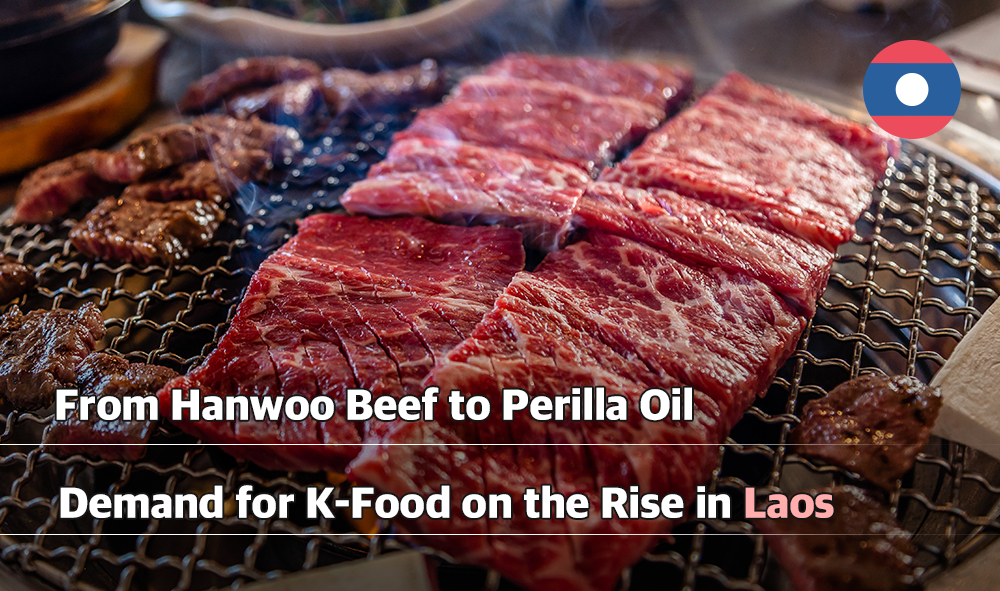
From Hanwoo Beef to Perilla Oil, Demand for K-Food on the Rise in Laos
The popularity of K-food and consumer goods in Laos is remarkable. A survey undertaken by the Korea Trade-Investment Promotion Agency (KOTRA) trade office, targeting 50 young people in Laos, sheds light on their exposure to Korean culture predominantly through K-pop and K-dramas. When queried about their inclination towards purchasing K-food spurred by this Hallyu wave, the majority expressed a keen interest.
The K-food that garnered the most attention from consumers, buyers, and local Korean restaurants in Laos was none other than Hanwoo (Korean beef). It was confirmed that there was a significant interest not only in Hanwoo for grilling, but also in various processed Hanwoo products such as gomtang (beef bone soup), jangjorim (braised beef in soy sauce), and yukpo (beef jerky). Reports suggest that perilla oil, challenging to source locally, quickly sold out due to word-of-mouth. With the Laos consumer market showing signs of expansion, the timing appears opportune for Korean agricultural and food products to make their mark.
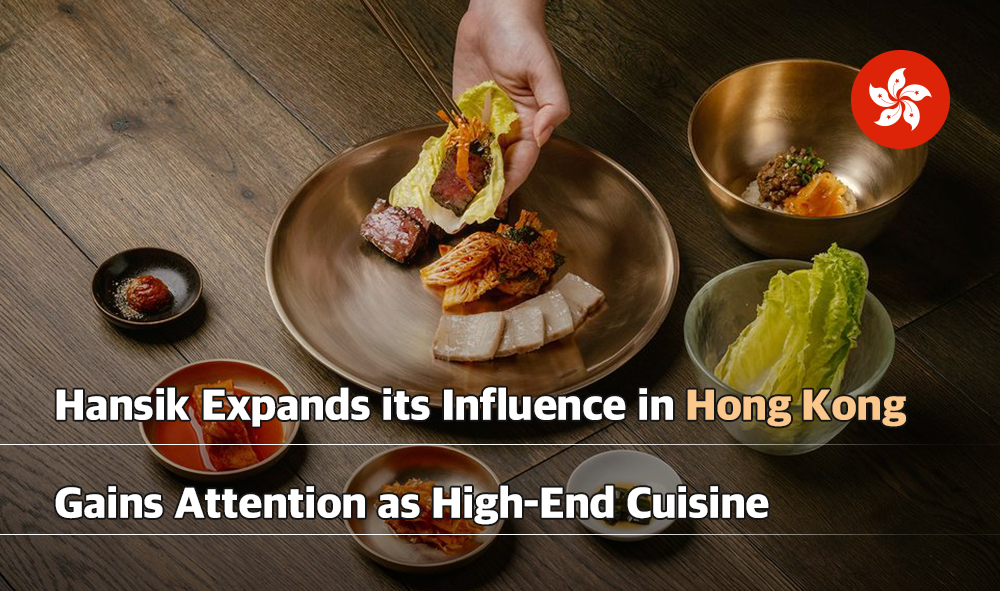
Hansik Expands its Influence in Hong Kong, Gains Attention as High-End Cuisine
On Hong Kong's dining scene, there's a noticeable shift towards embracing the sophistication of Korean cuisine. The Korea Agro-Fisheries & Food Trade Corporation highlighted that among the local youth, particularly those enchanted by Hallyu content, there's a growing preference for refined Korean culinary experiences, surpassing the popularity of staple dishes like Korean fried chicken and street food.
One standout example is ‘Hansik Goo’, an establishment in Hong Kong that not only secured a Michelin 1-star rating in 2022 but also earned acclaim within the local fine dining community. Chef Steve Lee's accolades, including winning Chef Awards at events like the Michelin Guide Hong Kong and Macau Awards last year, further solidify its reputation. This surge in interest towards upscale Hansik in the Hong Kong dining landscape can offer valuable insights for the Korean food industry strategizing for future international expansion.
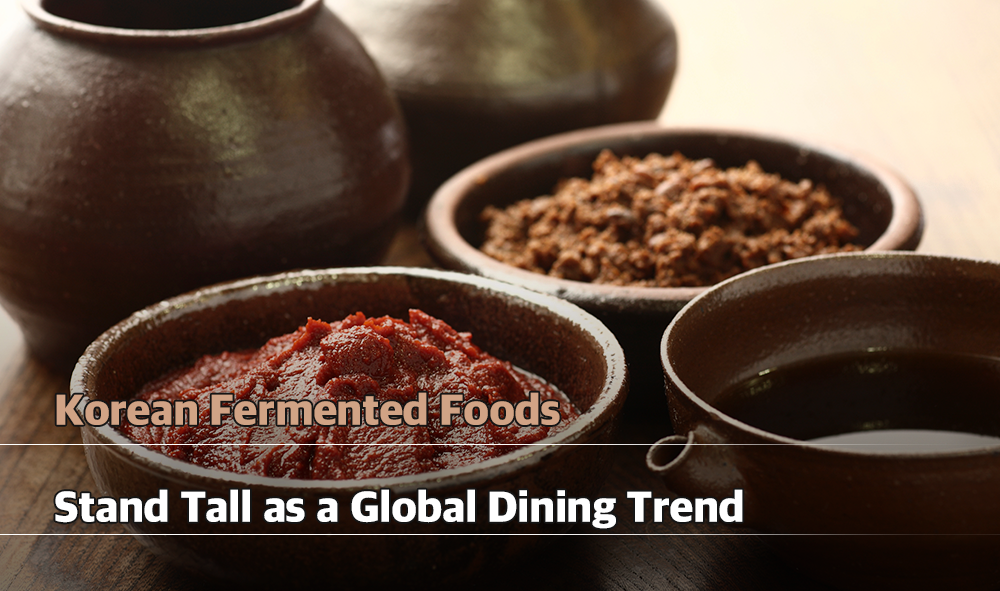
Korean Fermented Foods Stand Tall as a Global Dining Trend
Korea's fermentation culture, born out of the need to preserve food in the past, is being reevaluated in light of recent global trends favoring healthy eating and unique flavors. It's being recognized as a trendy cooking method that elevates the taste of food by adding the sixth flavor, known as ‘rich flavor’.
In its 2024 Food and Beverage Trends Report, British retail giant 'Waitrose' identified fermentation as a global dining trend and introduced Korea's fermented soybean paste, Doenjang, as an appealing ingredient. It highlighted how Korea's fermented doenjang, made from soybeans, can be used in fried dishes or salad dressings, offering a fresh perspective beyond its traditional use in soups and stews. The future seems promising for fermented foods like doenjang, ganjang (soy sauce), and gochujang (red chili paste), which are indispensable to Koreans and increasingly beloved by people worldwide.
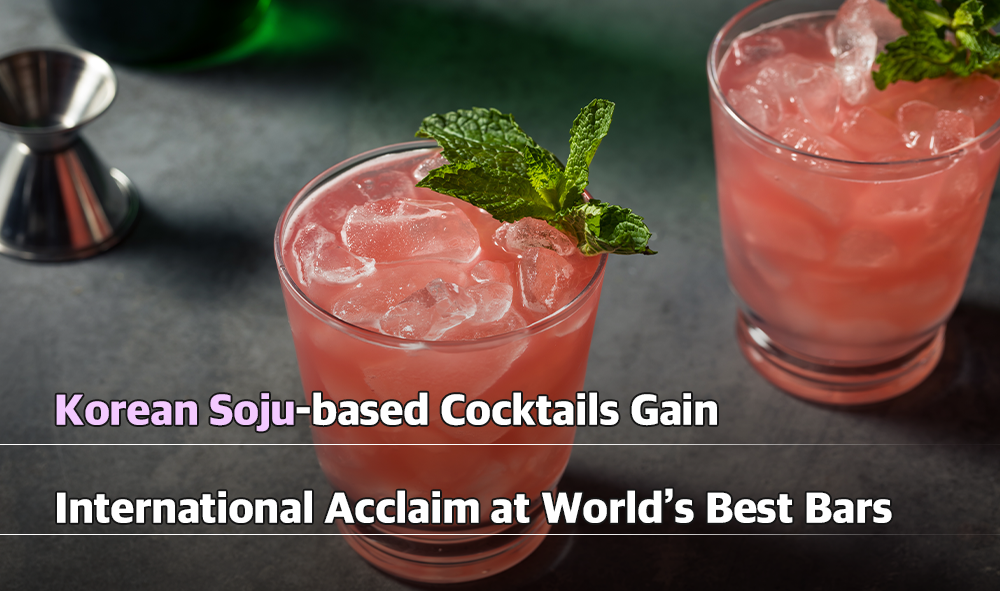
Korean Soju-based Cocktails Gain International Acclaim at World’s Best Bars
Cocktails made with traditional Korean soju are gaining popularity in the world's best bars. According to US media outlet 'Bloomberg,' seven of the bars selected for the '2023 World’s 50 Best Bars' located in countries such as the United States and Hong Kong are offering cocktails and other alcoholic beverages based on Korea's traditional distilled soju.
Not only premium distilled spirits but also the commonly known diluted soju are attracting the attention of global consumers. According to the '2023 Overseas Korean Food Consumer Survey' conducted by the Korean Food Promotion Institute targeting 9,000 locals in 18 major cities abroad, 'soju' was the most well-known Korean alcoholic beverage, accounting for 41.1% (multiple responses). With both traditional Korean soju and the more widely recognized varieties gaining worldwide popularity, it is anticipated that the domestic liquor industry will experience even more vitality.
Photos Instagram @kisarestaurant, @hansikgoo
References The Weekly Chosun article <New York's Emergence of 'K-Style Restaurants'... High Praise for a 44,000 Won Korean Meal>, OBS News article <'Foodie City' Singapore Captivated by K-Food>, KOTRA Overseas Market News <Laos Calls for K-Food and Consumer Goods>, Herald Economy article <Upscale Trend of Korean Cuisine in Hong Kong's Dining Industry [Global Food Report with aT]>, Dong-A Ilbo article <Korea's Fermentation Reshaping the World Culinary Map>, SBS article <[Friendly Economy] Success of 'Soju Cocktails' in the World's Top Bars>

 한국어
한국어
 English
English






